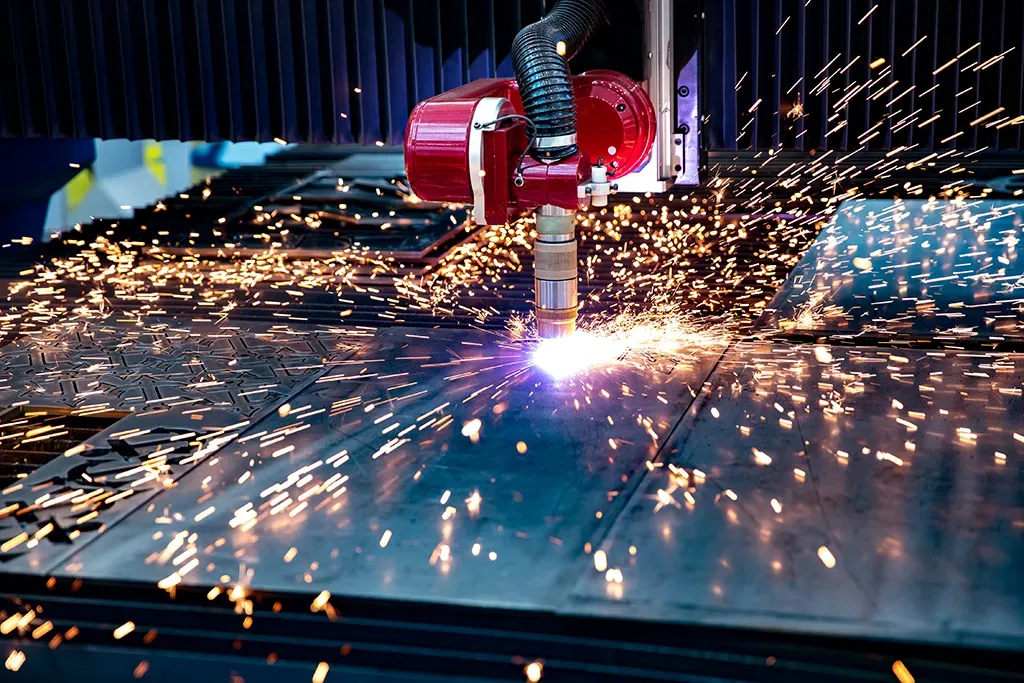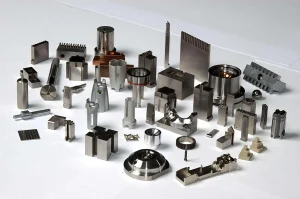Machining is a fundamental process in manufacturing. However, there are two main types of machining: precision and non-precision. Each serves a unique purpose, depending on the part’s required accuracy. In this article, we’ll explore the key differences between precision machining and non-precision machining, focusing on their applications, tools, and tolerances.

1. Understanding Precision Machining
Precision machining refers to the process of creating parts with very tight tolerances. Manufacturers use this process to produce parts that must meet exact specifications, often within microns. Precision machining is vital in industries like aerospace, medical, and electronics, where even the smallest deviation can impact performance.
Precision machining uses advanced machines, such as CNC (Computer Numerical Control) equipment. These machines allow for extreme accuracy and consistency. Operators input specific designs, and the CNC machine follows these instructions to remove material with high precision.
In summary, precision machining prioritizes accuracy and is used when quality and exactness are critical.
2. What is Non-Precision Machining?
Non-precision machining, by contrast, doesn’t require the same level of accuracy. Manufacturers use non-precision techniques to create parts where tight tolerances aren’t essential. These parts might have looser dimensional requirements and can often tolerate minor deviations.
Non-precision machining involves more basic tools and processes. Manual lathes, drills, and saws are common in this category. These tools do not offer the same level of control as CNC machines. However, they are sufficient for parts that do not require high precision.
In short, non-precision machining is often faster and less expensive but sacrifices tight tolerances.
3. Tolerance Levels: The Key Difference
The main distinction between precision and non-precision machining lies in the tolerance levels. Tolerance refers to how much a part’s actual dimensions can vary from its design. Precision machining often works within extremely tight tolerances, sometimes as narrow as a few microns. This ensures the final part is as close to the original design as possible.
Non-precision machining, on the other hand, allows for more variation. Tolerances might be measured in millimeters rather than microns. While this is acceptable for parts that don’t require high accuracy, it wouldn’t be suitable for more critical components.
Simply put, if a part needs to fit perfectly with other components, precision machining is the way to go.
4. Tools Used in Precision vs. Non-Precision Machining
Precision machining relies heavily on advanced technology. CNC machines, grinders, and EDM (Electrical Discharge Machines) are commonly used. These tools allow for automated, high-accuracy operations that are difficult to achieve manually. CNC machines, for example, can cut complex shapes with high precision and consistency. Additionally, automated tools reduce human error.
Non-precision machining, by contrast, often uses manual tools. These include hand-operated lathes, drills, and cutting machines. While these tools are effective for basic tasks, they cannot achieve the same level of accuracy as CNC machines. As a result, non-precision machining is typically used for simpler parts or tasks that don’t require fine detail.
In short, the tools used in precision machining are more advanced and accurate than those in non-precision machining.
5. Applications in Industry
Precision and non-precision machining each serve different industries. Precision machining is crucial for sectors like aerospace, medical, and electronics, where even tiny errors can lead to failures. For example, medical implants or aircraft components must meet strict tolerances to function properly.
Non-precision machining, on the other hand, is more common in industries where accuracy is less critical. Construction equipment, basic machinery parts, and consumer goods often rely on non-precision techniques. These parts don’t need the same level of exactness, so non-precision machining is faster and more cost-effective.
In summary, precision machining serves high-tech industries, while non-precision machining is suited for simpler tasks.
6. Cost and Efficiency
Another key difference between precision and non-precision machining is cost. Precision machining is generally more expensive due to the advanced tools and skilled operators required. Each part undergoes rigorous checks to ensure it meets tight tolerances. As a result, the process takes more time, and the tools themselves are more costly.
Non-precision machining, by comparison, is more affordable. The tools are simpler, and the process is faster since it doesn’t require the same level of accuracy. For parts that don’t need to be exact, this option is both time- and cost-efficient.
In short, precision machining offers higher accuracy at a higher cost, while non-precision machining focuses on speed and cost-effectiveness.
Conclusion
The difference between precision machining and non-precision machining comes down to accuracy, tools, and applications. Precision machining is necessary when tight tolerances and detailed accuracy are required, using advanced tools like CNC machines. Non-precision machining, however, is a more cost-effective solution for parts that do not need such strict specifications.
Both methods are vital in manufacturing, depending on the project’s needs. Understanding when to use each type ensures that manufacturers produce parts efficiently and accurately. Whether you’re in aerospace, automotive, or general manufacturing, knowing the difference will help you choose the right machining process for your needs.






